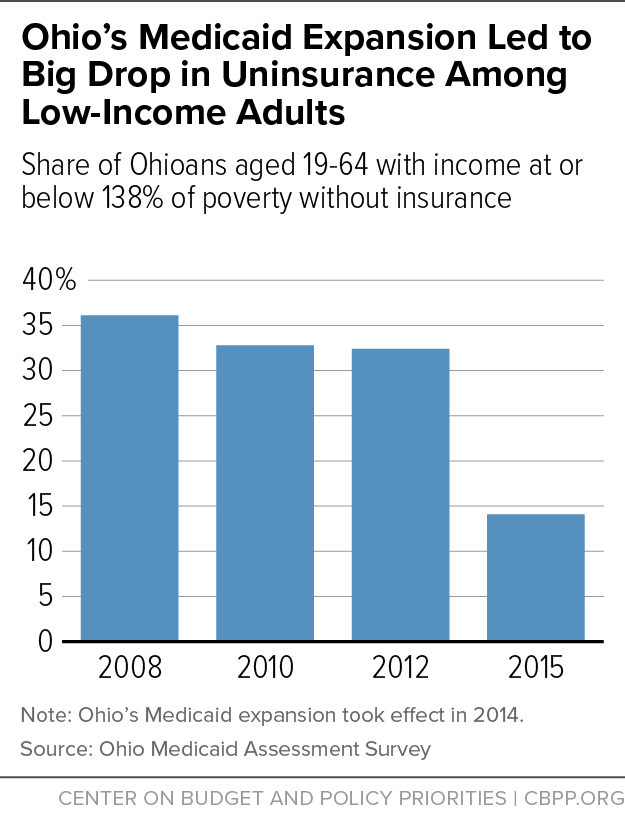BEYOND THE NUMBERS
Medicaid expansion has generated dramatic gains in health coverage among low-income Ohioans, and enrollees report that coverage has improved their health, financial well-being, and job prospects, says a new report from Ohio’s Medicaid agency. The report provides a snapshot of what is at stake for the millions of people across the country who would lose their Medicaid coverage if President-elect Trump and congressional Republicans repeal the Affordable Care Act (ACA), including the expansion.
In Ohio, more than 700,000 people have enrolled in Medicaid through the expansion, leading to an 18 percentage point drop in the uninsured rate (from 32 percent in 2012 to 14 percent in 2015) among non-elderly adults with incomes below 138 percent of the poverty line (about $16,400 a year for an individual). (See chart.)
Beyond the coverage gains, the report finds that the Medicaid expansion has:
- Provided a path to coverage for those without other affordable options. Three-quarters of expansion enrollees were previously uninsured before signing up for Medicaid.
- Increased access to critical health services. Enrollees report a decline in unmet health needs, as well as better access to mental health services and treatment for chronic health conditions.
- Improved employment prospects. Among those who were unemployed and looking for work when they gained coverage, 75 percent said Medicaid made the task easier. And among those who were employed, half said Medicaid made it easier to stay working.
- Improved personal finances. Enrollees reported that coverage made it easier to afford other expenses like food, housing, and debt repayment.
Moreover, repealing the expansion would harm states in other ways, as our recent paper explains. The loss of federal funding that expansion now provides would place a tremendous burden on state budgets, lead to hospital closures (especially in rural areas), and increase uncompensated care costs for states and health care providers.

